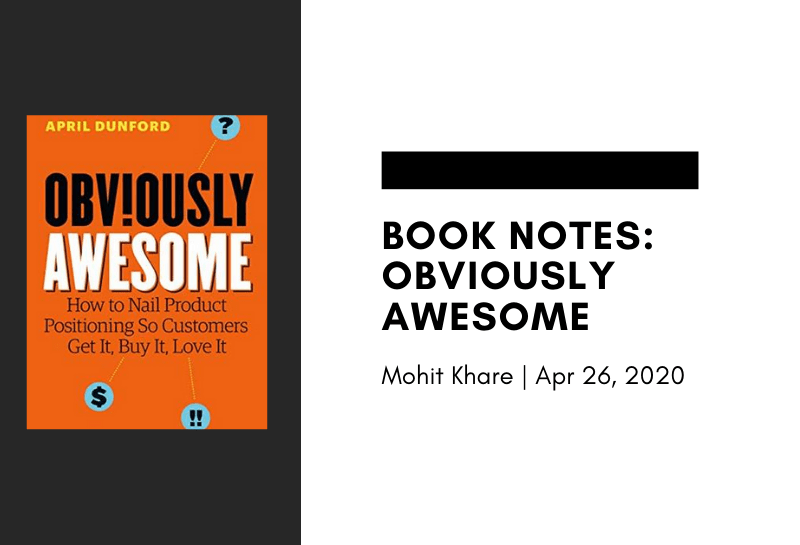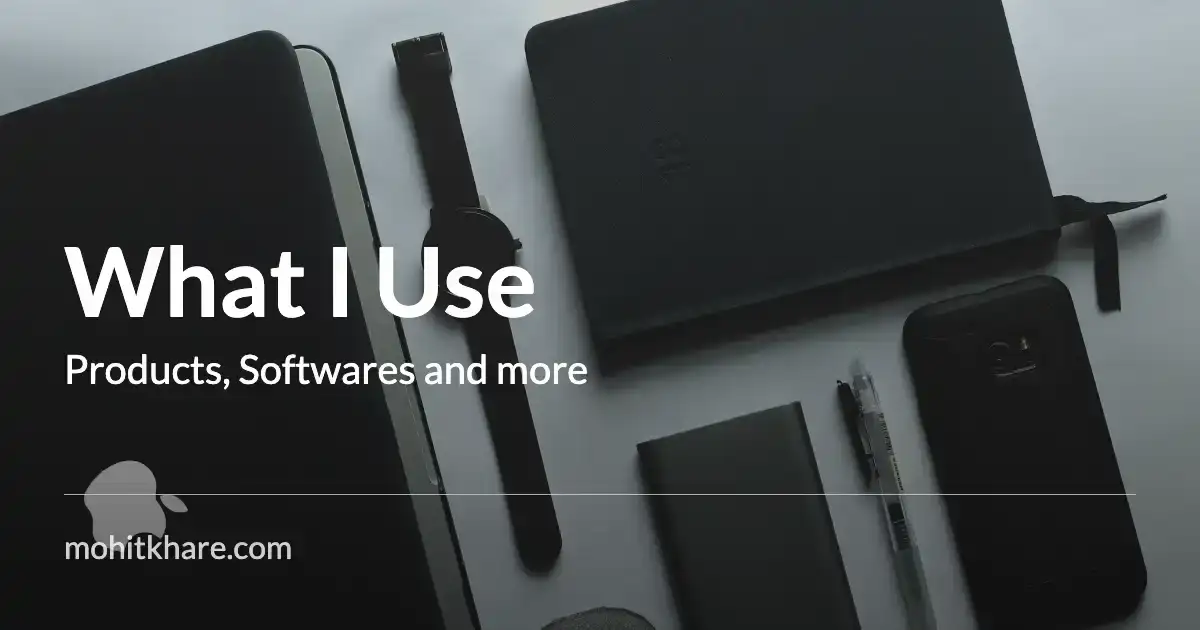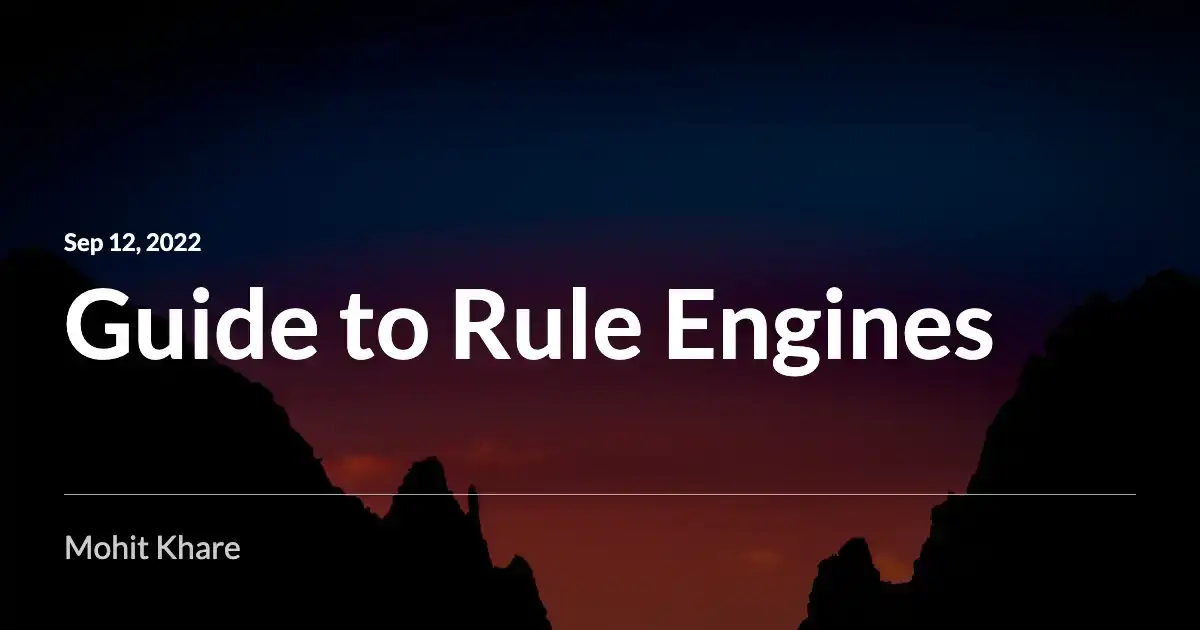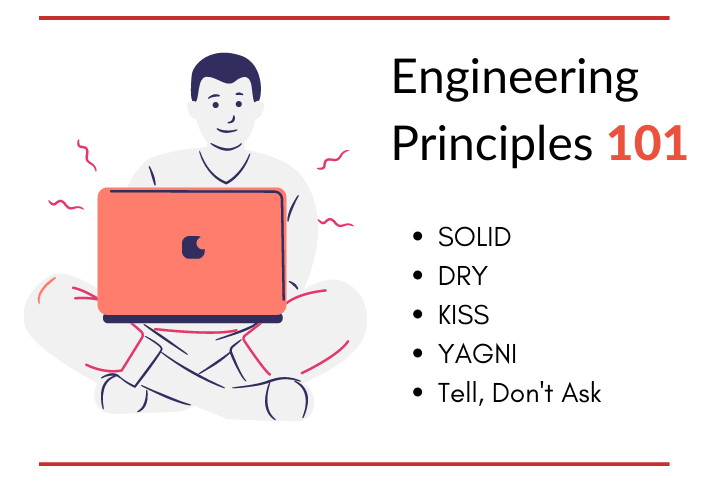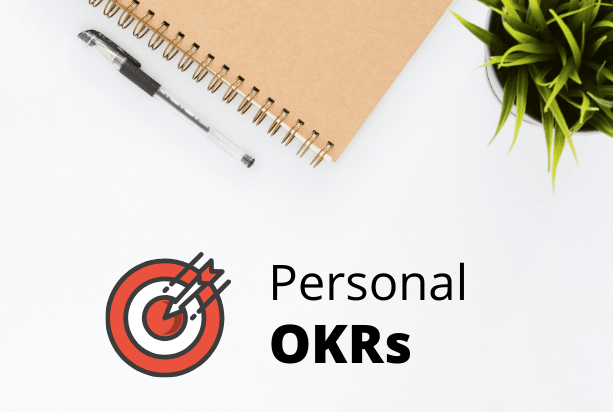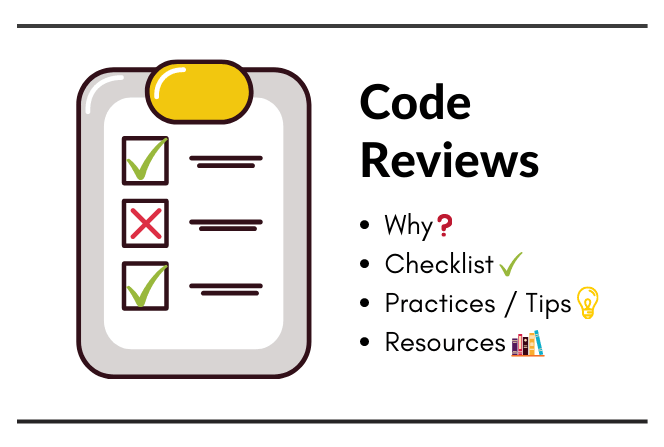Get latest articles directly in your inbox
These are highlights/notes from book “Obviously Awesome” by April Dunford. These are personal notes, would recommend reading the book, but in case you are short on time - just skim through these notes 😊
In case you are looking for book recommendations! Check Learnshots
Positioning is the act of deliberately defining how you are the best at something that a defined market cares a lot about.
If we fail at positioning, we fail at marketing and sales. If we fail at marketing and sales, the entire business fails.
Weak positioning diminishes the results of everything we do in marketing and sales. It’s a wind in our face, constantly slowing us down, making the effort required to meet our business targets just that much more difficult. It’s like trying to make an omelet with rotten eggs
The first step to optimizing positioning is to really understand what it is.
Strategy is about making choices,
Customers need to be able to easily understand what your product is, why it’s special and why it matters to them
Your current customers love you, but new prospects can’t figure out what you’re selling
Even a world-class product, poorly positioned, can fail.
Trap 1: You are stuck on the idea of what you intended to build, and you don’t realize thatyour product has become something else
As product creators, we need to understand that the choices we make in positioning and context can have a massive impact on our businesses—for better or worse.
Trap 2: You carefully designed your product for a market, but that market has changed
We generally fail to consider other—potentially better—ways to position our products because we simply aren’t positioning them deliberately.
Find out who you are and do it on purpose.”
The customer’s point of view on the problem you solve and the alternative ways of solving that problem.
The ways you are uniquely different from those alternatives and why that’s meaningful for customers.
The characteristics of a potential customer that really values what you can uniquely deliver.
The best market context for your product that makes your unique value obvious to those customers who are best suited to your product.
Competitive alternatives. What customers would do if your solution didn’t exist.
Unique attributes. The features and capabilities that you have and the alternatives lack.
Value (and proof). The benefit that those features enable for customers.
Target market characteristics. The characteristics of a group of buyers that lead them to really care a lot about the value you deliver.
Market category. The market you describe yourself as being part of, to help customers understand your value.
(Bonus) Relevant trends. Trends that your target customers understand and/or are interested in that can help make your product more relevant right now.
Your unique attributes are your secret sauce, the things you can do that the alternatives can’t.
Value is the benefit you can deliver to customers because of your unique attributes.
If unique attributes are your secret sauce, then value is the reason why someone might care about your secret sauce.
Value should be as fact-based as possible
Your target market is the customers who buy quickly, rarely ask for discounts and tell their friends about your offerings
Sit, walk or run, but don’t wobble.
Trends can help customers understand why a product is important right now
Attributes of your product are only “unique” when compared with competitive alternatives. Those attributes drive the value, which determines who the best target customers are, which in turn highlights which market frame of reference is the best one to highlight your value.
Understand the Customers Who Love Your Product -
Your best-fit customers hold the key to understanding what your product is.
The first step in the positioning exercise is to make a short list of your best customers
If the company mainly sells a group of products together, I would position the company first
“It’s no use of talking unless people understand what you say.”
You want engagement from every group because you need buy-in from every group.
For your team to develop a new position, they need a common understanding of the goal and expected outcomes.
Freeing your mind from patterns of the past isn’t always easy.
he features of our product and the value they provide are only unique, interesting and valuable when a customer perceives them in relation to alternatives.
Focus on your best customers and what they would identify as alternative solutions.
isolate what makes you different and better than those alternatives.
Concentrate on “consideration” rather than “retention” attributes.
Focus on capturing the broader set without trying to decide what’s really important and what isn’t.
Map the Attributes to Value “Themes”
Attributes or features are a starting point, but what customers care about is what those features can do for them
Moving from “features” to “benefits” and then to “value”
” Taking the question further, What does that mean for customers? What can they do with a faster response time that they couldn’t with a slower response? The answer might be that they can use the system to respond to their own customers while a customer is on the phone, rather than having to call them back, thereby decreasing support response times and increasing their customers’ satisfaction.
In positioning a product, we’re taking the most critical things that make us special and worth considering
Think about the difference between your best-fit customers and your other customers. Your other customers think your product is OK for the price, but they will jump ship if a different company offers a cheaper or better version. These customers are harder to close business with—they take their time making a purchase decision and frequently ask for a discount. In short, they like your product but they just don’t love it. You can target your marketing and sales programs at them, but selling to them and keeping them happy isn’t going to be easy.
Target as narrowly as you can to meet your near-term sales objectives.
the segment needs to meet at least two criteria to be worthy of focus: (1) it needs to be big enough that it’s possible to meet the goals of your business, and (2) it needs to have important, specific, unmet needs that are common to the segment
pick a market frame of reference that makes your value obvious to the segments who care the most about that value.
Use abductive reasoning. The adage “if it looks like a duck, swims like a duck and quacks like a duck, then it probably is a duck”
The “style” of positioning you choose will depend on a set of factors including the competitive landscape and your business goals.
Head to Head: Positioning to win an existing mark
Big Fish, Small Pond: Positioning to win a subsegment of an existing market
Create a New Game: Positioning to win a market you create
The advantage of positioning in an existing market category is that you don’t have to convince people the category needs to exis
In marketing, the process of splitting up an existing market is called subsegmenting. A market can be subsegmented by industry (manufacturing vs. retail), by geographic region (North America vs. South America), company size and a myriad of other criteria.
The goal of the Big Fish, Small Pond style of positioning is to carve off a piece of the market where the rules are a little bit different—just enough to give your product an edge over the category leader.
Your focus is showing that there is a subsegment of the overall category with a specific set of needs that the current category leaders are not addressing.
Dominating a small piece of the market is generally much easier than attempting to directly take on a larger leader.
Word-of-mouth marketing happens most naturally in tight market subsegments.
You have the ability to meet the special needs of the subsegment much better than the category leader.
If you are trying to dominate a subsegment, be careful that the market leader doesn’t turn their attention to the subsegment and try to offer a “good enough” solution with some features that at least partially meet the buyers’ needs.
When to use the Create a New Game style
You aren’t simply capturing demand that already exists; you have to spark some demand first.
In the other positioning styles, you’re leveraging what folks already know about a category and building on that to create a position in the mind of customers. In this style, you are starting with a blank canvas.
Customers need to first understand why the category deserves to exist. Why is the problem unique? Why do existing solutions in other categories fall short of solving that problem?
Category creation is about selling the market on the problem first, rather than on your solution
Create a New Game allows you to create a market that is perfectly tailored to your strengths and weaknesses.
If you change the way you look at things, the things you look at change.
Trends can only be used when they have a clear link to your product. Start
capturing your positioning in a document with enough detail that it can be used by marketing, sales and product creation. This document should break down each individual component of the position, give enough detail for each to be understood and show how they interact with one another.
I will give you just one tip that I think is important: write a messaging document. Every campaign you create or new piece of material you build is going to have a slightly different purpose and slightly different messaging
Any product can be positioned in multiple markets. Your product is not doomed to languish in a market where nobody understands how awesome it is.
Great positioning rarely comes by default. If you want to succeed, you have to determine the best way to position your product. Deliberate, try, fail, test and try again
Understanding what your best customers see as true alternatives to your solution will lead you to your differentiators.
Position yourself in a market that makes your strengths obvious to the folks you want to sell to.
Use trends to make your product more interesting to customers right now, but be very cautious. Don’t layer on a trend just for the sake of being trendy—it’s better to be successful and boring, rather than fashionable and bewildering.
More book summaries
Follow my reading list on Goodreads. Share your favourite reads in the comment section. Do drop a 👍 and share it with your friends.
Liked the article? Consider supporting me ☕️
I hope you learned something new. Feel free to suggest improvements ✔️
I share regular updates and resources on Twitter. Let’s connect!
Keep exploring 🔎 Keep learning 🚀
Liked the content? Do support :)
